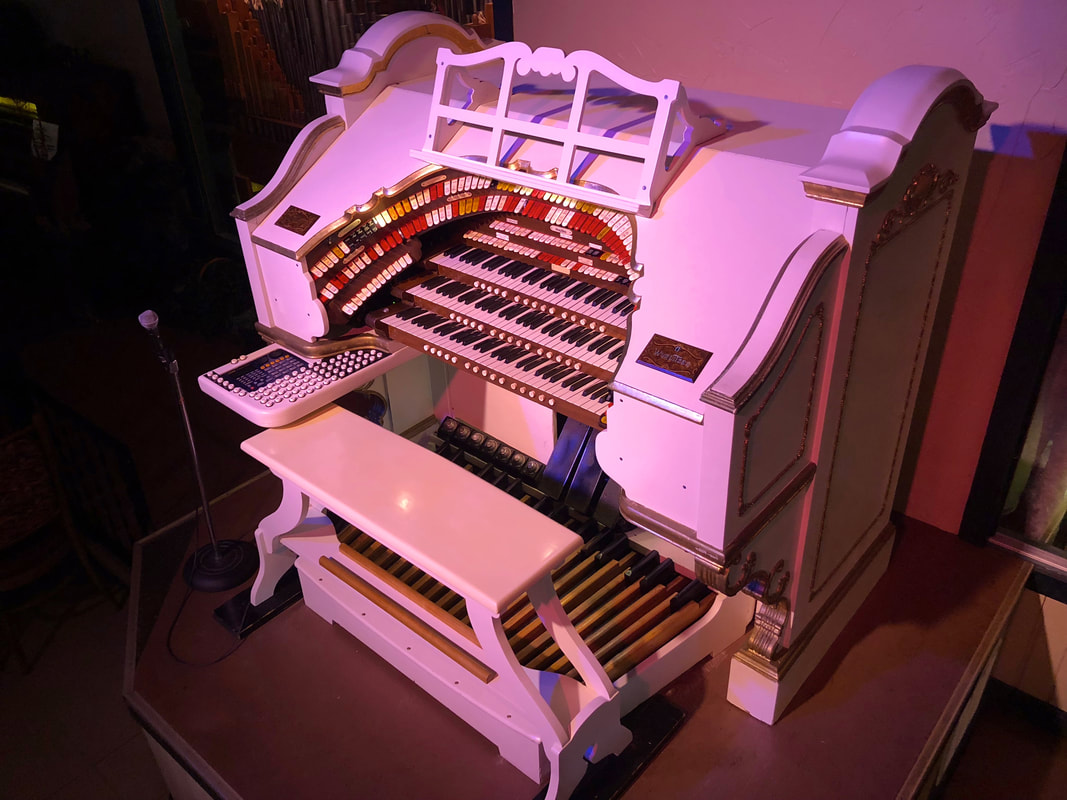The Console
The console is the control center of the organ, in theaters this was the only part of the organ that was actually visible to the audience. Our Wurlitzer console was built in 1929 for the Seneca Theater in Buffalo, NY. It has had several homes since then, most recently the Avalon Theater in Milwaukee.
The rows of multi-colored tabs are called Stops, these turn on ranks of pipes in the chambers. The colors are: red for reed and brass sounds; yellow for string sounds; white for flutes, diapasons, and percussion; and black for coupling one keyboard to another. The organists can pre-select combinations of these stops, which can be recalled at the push of a button. Also controlled from the console are buttons, pedals, and switches for various sound effects (bird whistles, sirens, door bells, etc.), and theatrical lighting effects.
The Console has:
Three 61-note Keyboards
One 32-note Pedal board
234 Multi-Colored Stop tabs
158 Other Miscellaneous Controls (Combination Pistons, Sound Effects, Lighting Controls, etc.)
With a Grand Total of 604 controls at the organists' fingertips (or feet!)
The rows of multi-colored tabs are called Stops, these turn on ranks of pipes in the chambers. The colors are: red for reed and brass sounds; yellow for string sounds; white for flutes, diapasons, and percussion; and black for coupling one keyboard to another. The organists can pre-select combinations of these stops, which can be recalled at the push of a button. Also controlled from the console are buttons, pedals, and switches for various sound effects (bird whistles, sirens, door bells, etc.), and theatrical lighting effects.
The Console has:
Three 61-note Keyboards
One 32-note Pedal board
234 Multi-Colored Stop tabs
158 Other Miscellaneous Controls (Combination Pistons, Sound Effects, Lighting Controls, etc.)
With a Grand Total of 604 controls at the organists' fingertips (or feet!)

